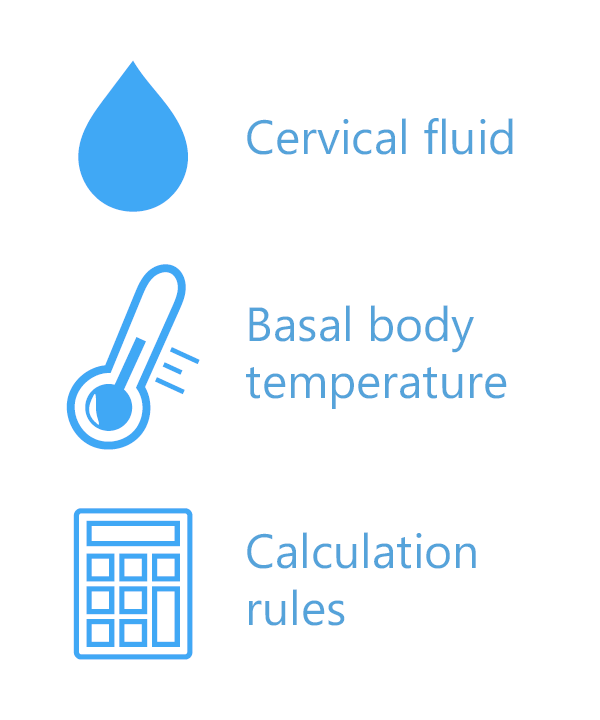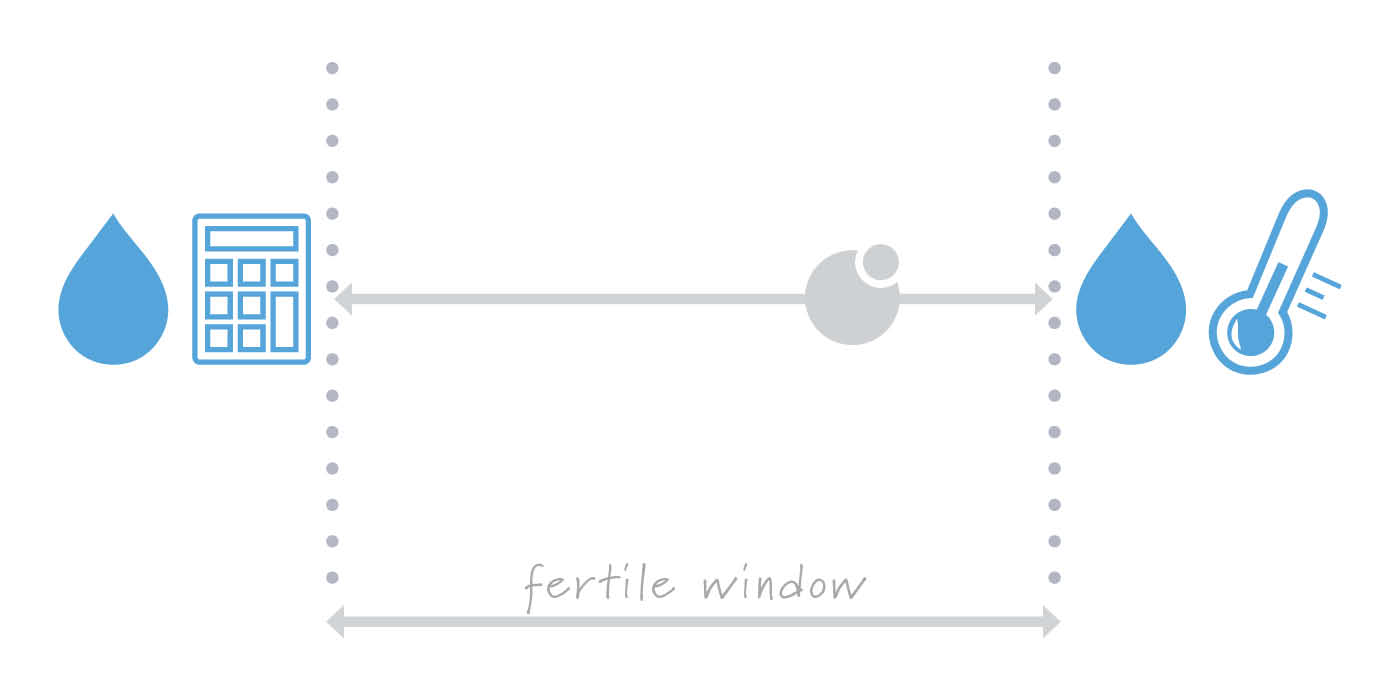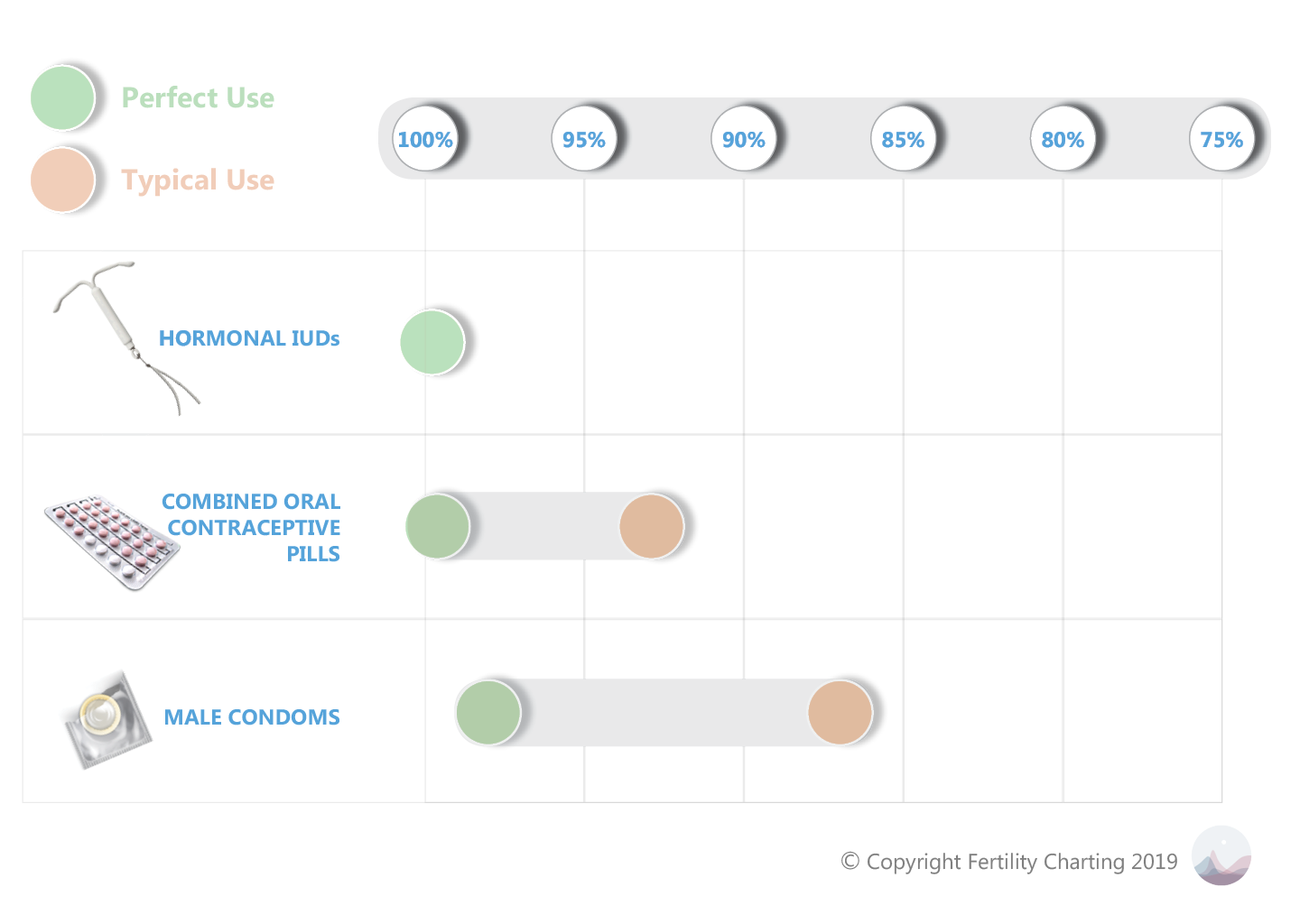
Fertility Awareness-Based Methods (FABMs) involve tracking our fertility signs. Understanding these signs can help to avoid or achieve pregnancy. This website provides resources, guidance and education for the Symptothermal Double-Check Method. This is a type of FABM.
“How effective is the Symptothermal Double-Check Method?“ This is one of the very first questions people ask when they start investigating natural contraceptive options. Contraceptive effectiveness rates for FABMs are nuanced – and there’s a high chance that you’ve heard differing effectiveness rates from different sources. Unfortunately, this means that many people are currently making decisions about their reproductive health based on inaccurate, incomplete or even misleading information. In many cases, this information is being delivered from trusted sources of contraceptive counseling such as General Practitioners (GP’s), Obstetrician-Gynaecologists (OBGYN’s), and government public health websites.
When discussing contraceptive effectiveness, it’s important to first clarify which individual FABM we are talking about. This article covers contraceptive effectiveness estimates for the Symptothermal Double-Check Method. In some religious circles, this method is referred to as a Natural Family Planning (NFP) method.
HOW DOES THE SYMPTOTHERMAL DOUBLE-CHECK METHOD WORK?
With the combined life of sperm and an egg, we experience a biological fertile window of approximately 6 days each menstrual cycle. The Symptothermal Double-Check Method uses physical observations and calculations to alert the user to the opening and closing of this fertile window (with a buffer of a few days added on either side).

What the user chooses to do with this information is a matter of personal choice. The Symptothermal Double-Check Method can be used as a highly effective form of natural contraception, as a way to conceive a child, or as a window into your hormonal health each menstrual cycle. One of the most beneficial aspects of the Symptothermal Double-Check Method (and indeed all FABMs) is that it is extremely versatile and can be used to achieve all of these reproductive goals at different points in your life.
WHAT’S IN A NAME? THE SYMPTOTHERMAL DOUBLE-CHECK METHOD
Sympto stands for “symptoms” and refers to the physical symptom of cervical mucus (sometimes known as cervical fluid). Thermal refers to basal body temperature. Double-Check refers to the fact that both the opening and the closing of the fertile window are both double-checked against another fertility sign or calculation.

Cervical mucus is influenced by oestrogen and progesterone and changes in consistency, colour and volume throughout the menstrual cycle. Your basal body temperature (BBT) is your core body temperature at rest and it is influenced by progesterone. BBT rises after ovulation has already occurred. Calculation rules use data from past menstrual cycles to provide estimates for the earliest time that the fertile window might open. Physical symptoms always override calculation rules. Calculation rules help to make the Symptothermal Double-Check Method very safe.
WHAT’S THE DIFFERENCE BETWEEN DOUBLE / SINGLE CHECK SYMPTOTHERMAL METHODS?
Not all Symptothermal Methods are Double-Check Methods. Many Symptothermal Methods (such as the method outlined in the popular book Taking Charge of Your Fertility) are Single-Check Methods. You can find out more about which methods are Single versus Double Check methods here: Types of FABMs
Symptothermal Double-Check Methods use calculation rules to double check the opening of the fertile window.
Symptothermal Single-Check Methods do not double check the opening of the fertile window.

DIFFERENT TYPES OF CONTRACEPTIVE EFFECTIVENESS
To understand contraceptive effectiveness estimates, it’s helpful to clarify that there are two different types of effectiveness:
- Perfect use effectiveness
- Typical use effectiveness
Perfect use effectiveness is how well the method works if you use it correctly and consistently, every single time. Perfect use effectiveness rates are calculated in clinical trials. A clinical trial is a scientific study that follows participants in real-time (or close to it). The highly controlled nature of clinical trials means that the perfect use effectiveness rates are as accurate as possible and reflect a best case scenario.
Typical use effectiveness is how well the method works for real people in the real world where mistakes and carelessness can and do occur. While typical use rates can be calculated from clinical trials, scientists prefer calculating them from large population-based surveys. Using such large surveys of people across a wide range of demographics more accurately reflects a real world scenario. Scientists prefer not to use typical use rates from clinical trials because the participants are likely influenced by lots of contact with the researchers. In addition, the participants of clinical trials are unlikely to fully reflect the huge swathes of different demographics that will be using the contraception in real life.

Contraceptive methods with a high level of user involvement usually have a higher typical use failure rate. This is because there is more scope for user error. This includes contraceptive methods such as condoms, withdrawal, diaphragms, the Pill and FABMs.
Contraceptive methods with a low level of user involvement usually have a lower typical use failure rate. This is because there is hardly any scope at all for user error. For example, hormonal IUD’s have perfect use and typical use failure rates that are identical. This is because once the IUD is in, the user doesn’t have to do anything at all to ensure the IUD is effective.

HOW EFFECTIVE IS THE SYMPTOTHERMAL DOUBLE-CHECK METHOD?
Currently, the best available data we have on the Symptothermal Double-Check Method is derived from a long-running clinical trial with results published by German researchers in 2007. The study followed 900 women during the course of 17,638 menstrual cycles over 20 years. The women were working closely with instructors of the Sensiplan protocol. The study is considered to be of moderate quality and was authored by lead researcher Petra Frank-Herrmann – you can read it here.
Based on this study, some Symptothermal Double-Check Methods may be up to 99.6% effective with perfect use. This figure is based on users who were abstaining from sexual contact during the fertile window. For users who were using condoms during the fertile window, the method was 99.4% effective with perfect use. Keep in mind that this is based on users who were in frequent contact with qualified Sensiplan instructors, and learning the specific Sensiplan method. Other Symptothermal Double-Check Methods may not share the same effectiveness. The researchers emphasised that the difference between condom-users and abstinence users was not statistically significant.
Remember how typical use effectiveness rates are best calculated via large population-based surveys? Well, we don’t have any of those surveys for individual FABMs – below you can read more as to why this is.
This means that the best estimate we have for typical use of Symptothermal Double-Check Methods is from the Frank-Herrmann clinical trial. Based on this data, the method was 98.2% effective with typical use. Scientists caution that this figure may not be generalisable to the wider public because it’s derived from a clinical trial. They also caution that we cannot compare this figure to the typical use rates of other types of contraceptives which are calculated based on large population-based surveys.

WHY DON’T WE HAVE A RELIABLE TYPICAL USE RATE FOR THE SYMPTOTHERMAL DOUBLE-CHECK METHOD?
At present, we don’t have a robust typical use effectiveness rate for the Symptothermal Double-Check Method (or any other type of FABM for that matter). This is because accurate typical use effectiveness rates need to be calculated from large population-based surveys – and individual types of FABMs don’t have high enough numbers of users to be able to generate a statistically valid result.
To get around this problem, some sources choose to lump all different types of FABMs into one group – this provides a large enough user base to generate a statistically valid result. A recent example of this is the 2006 – 2010 United States National Survey of Family Growth which provides an overarching 85% typical use effectiveness estimate for all FABMs combined (this figure is updated from an earlier US NSFG estimate of a 76% typical use effectiveness rate). The 85% typical use figure is quoted by Contraceptive Technology in their latest 21st edition published in 2018. The book Contraceptive Technology is a medical handbook used by U.S. physicians and health personnel as a resource on contraceptive counselling.
Here in Australia, many physicians and reproductive healthcare organisations look to Family Planning NSW’s ‘Contraception: An Australian Clinical Practice Handbook‘ for guidance on contraceptive counselling.
The problem with this approach of lumping all types of FABMs under one overarching typical use effectiveness rate is that it obscures the effectiveness rates of individual methods. In fact, over 80% of 2006 – 2010 US NSFG respondents were using the Calendar Rhythm method (a notoriously ineffective and outdated type of FABM). This means that the overarching 85% typical use effectiveness rate is likely skewed dramatically downward. In fact, Contraceptive Technology even tweeted about this issue recently:
On closer look: More than 80% of Fertility Awareness-Based methods (FABM) use in recent NSFG surveys is self-reported use of “rhythm.” So “lumped” effectiveness estimates may not apply to individual FABMs. #CTClinicalFact
— Contraceptive Technology (@ContraceptTech) March 5, 2019
KEY TAKEAWAYS
The Symptothermal Double-Check Method is highly effective with perfect use – proven up to 99.6% effective. We know that to achieve this figure, study participants were working closely with qualified instructors of the Sensiplan method and were highly committed users. We have a 98.2% typical use effectiveness rate that must be interpreted with caution as it is likely not fully generalisable to the real world. The 98.2% typical use figure cannot be directly compared to typical use rates for other types of contraceptives. Researchers warn that the above effectiveness rates may change in future with further studies of higher quality.
Finally, we know that to achieve the highest possible effectiveness with the Symptothermal Double-Check Method we need to be able to do three things:
- Accurately observe and chart our fertility biomarkers.
- Accurately apply the rules of the method to open and close the fertile window.
- Modify our sexual behaviour during the fertile window.
For those who are able to consistently and effectively chart their cycles and follow the rules, the Symptothermal Method is extremely effective. However, consistency is key. All FABMs are highly unforgiving of imperfect use – by definition if a mistake is made or a risk is taken it will result in unprotected intercourse during the fertile window of the menstrual cycle.
For this reason, it is very important to take the learning process very seriously and work with an instructor where financially possible. You can find one here: Find An Instructor.
If an instructor is not financially possible right now, self-teaching is an option. If you are going to self-teach you should be aware that the effectiveness of self-teaching the Symptothermal Double-Check Method is currently unknown. You can read more here: Self-Teach.

